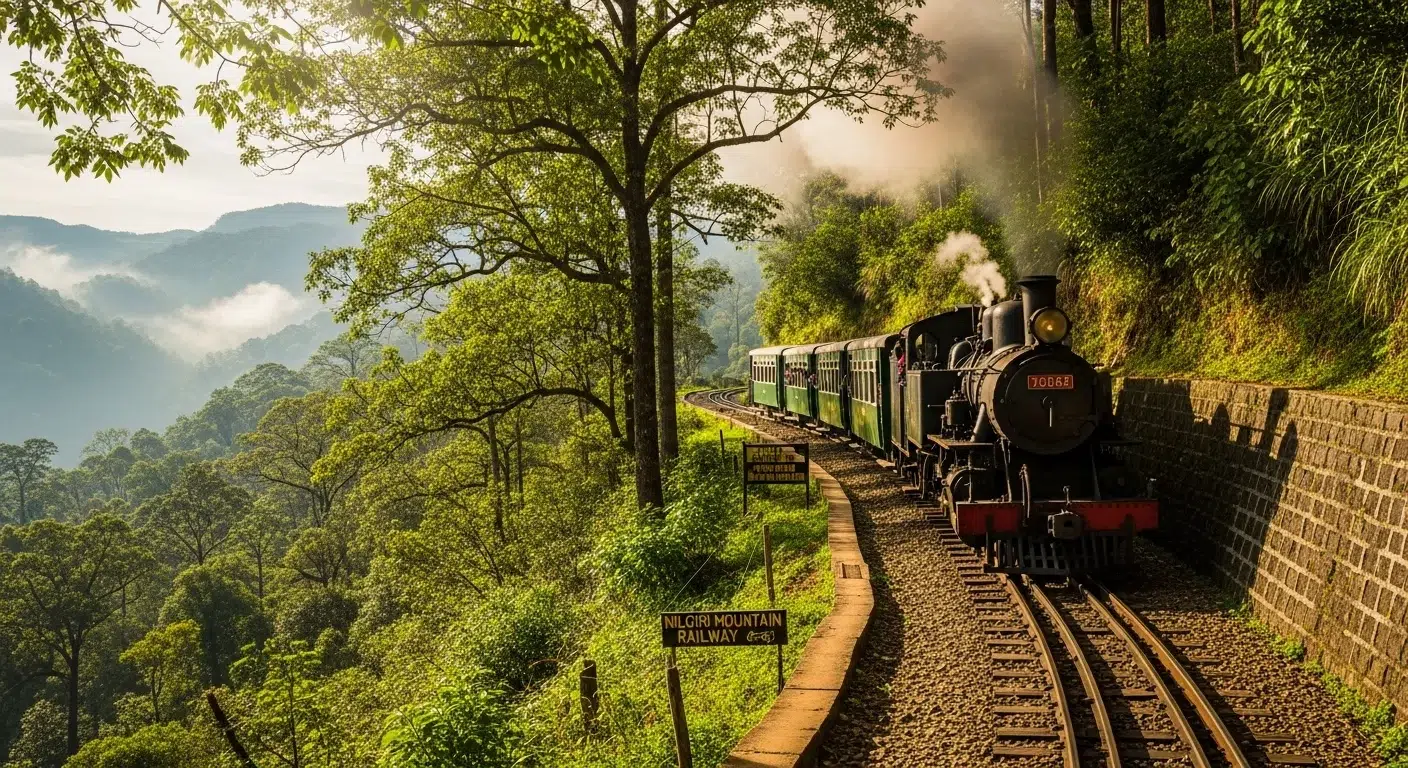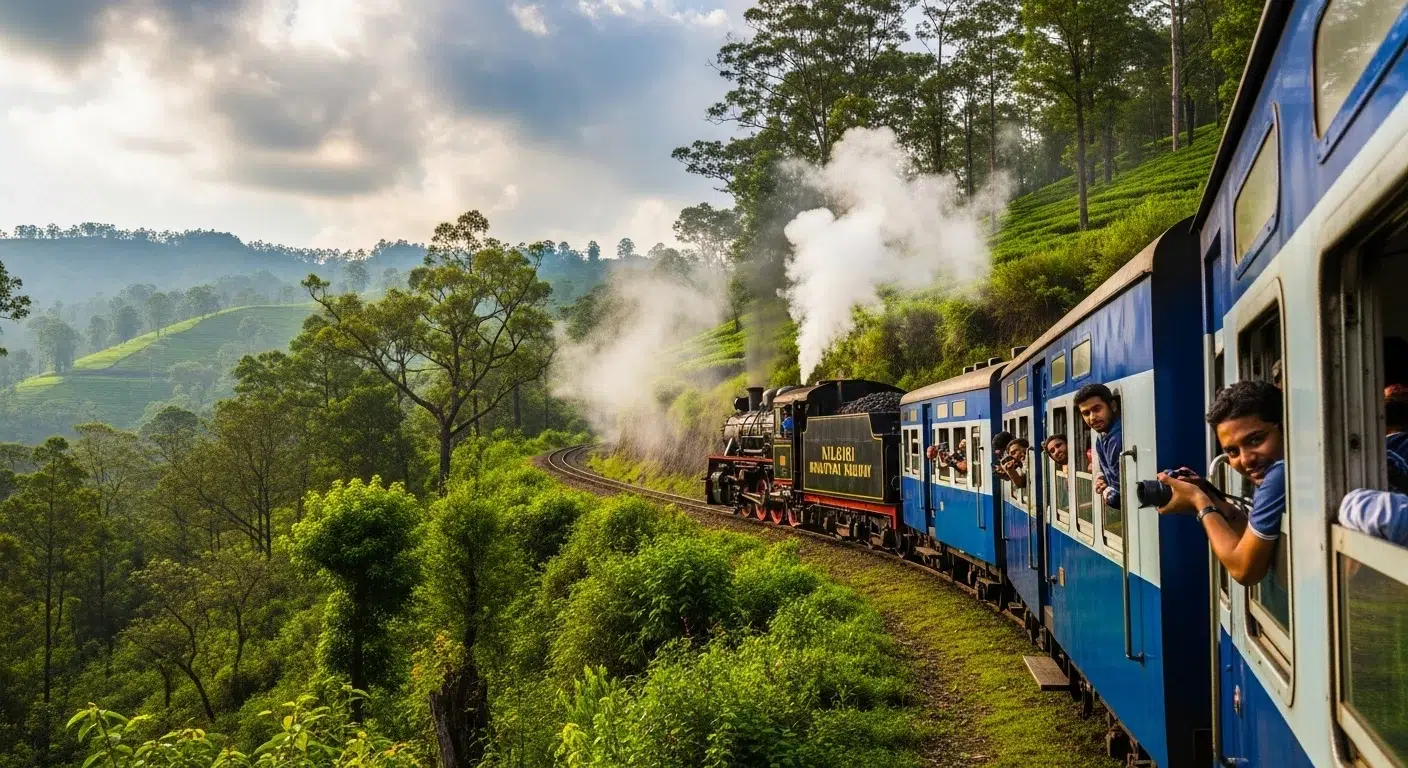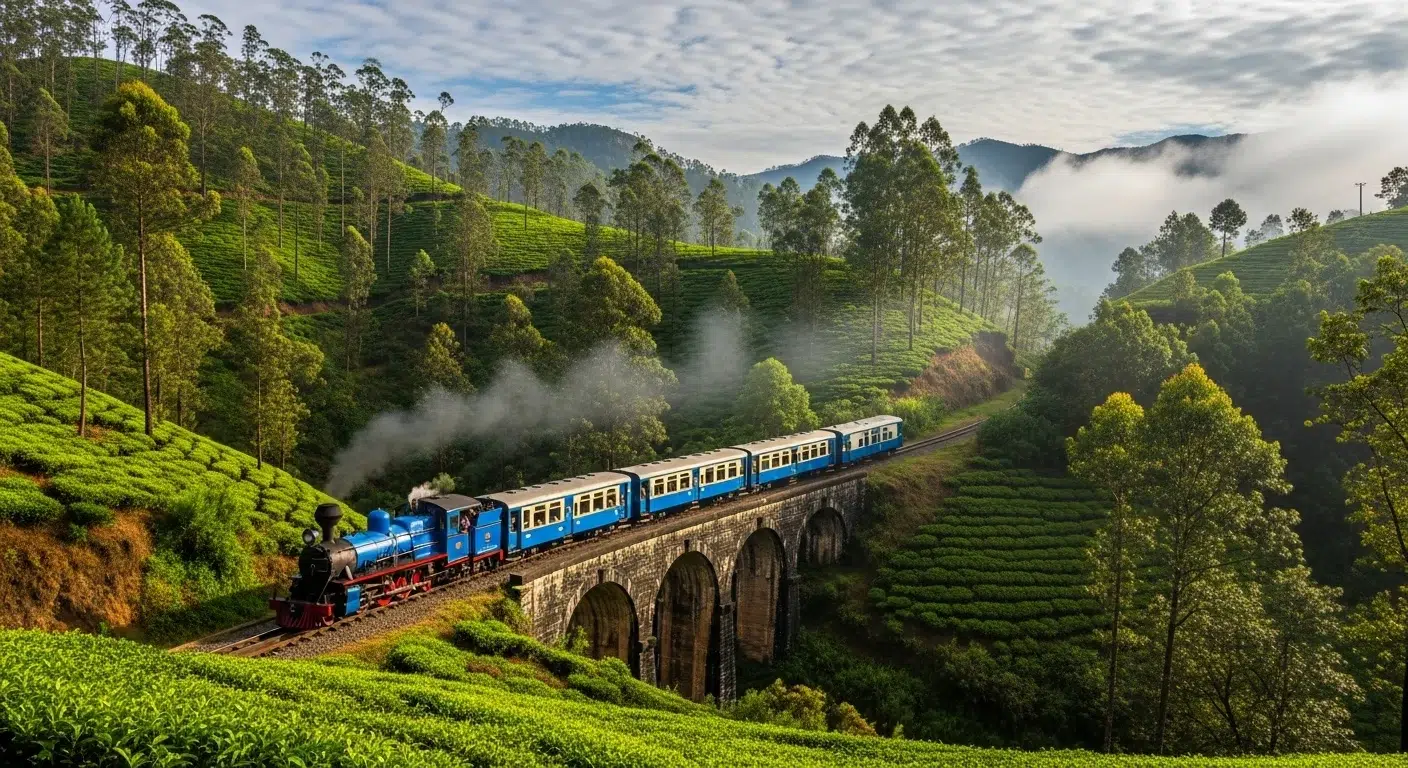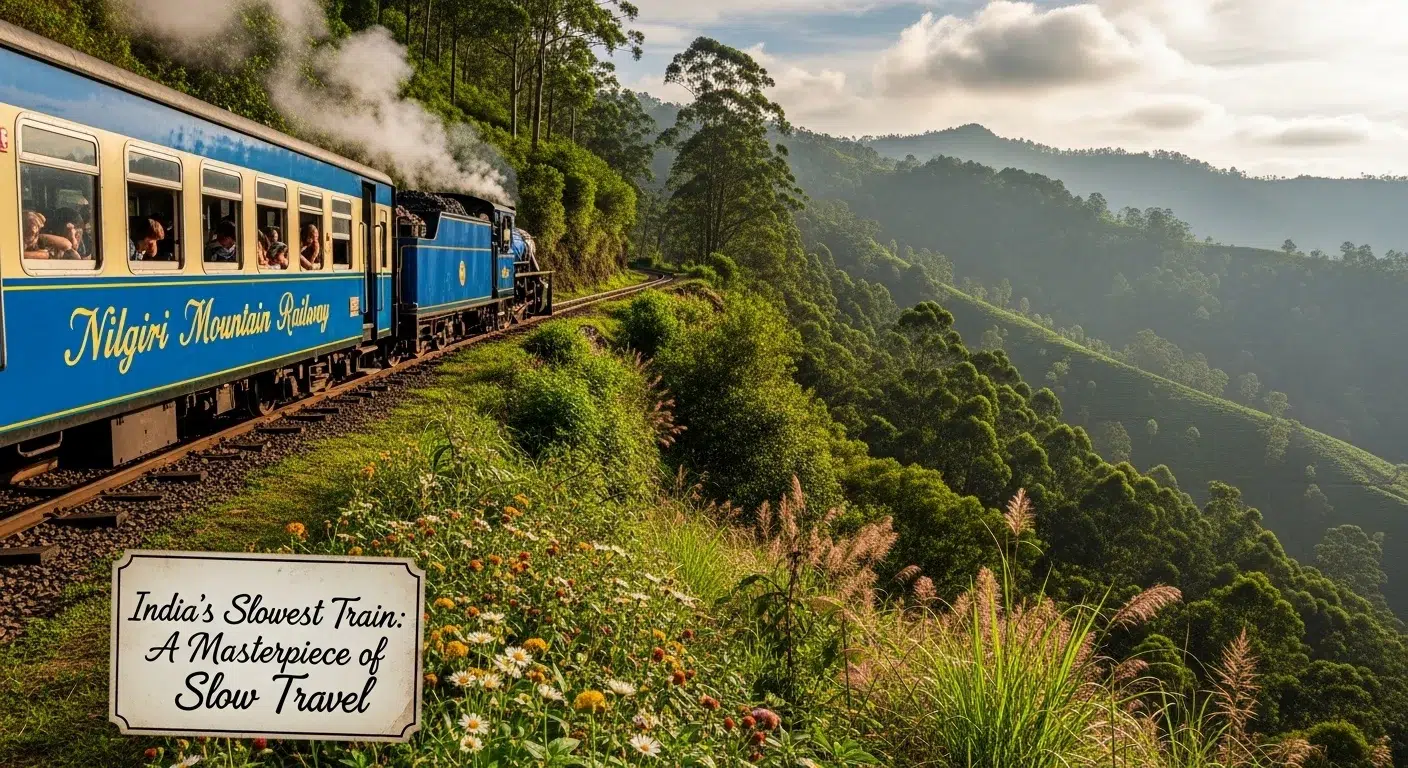Nilgiri Mountain Railway: India’s Slowest Train Yet Most Scenic Route Takes 5 Hours To Cover 46 Km
In a world obsessed with speed and express trips, there’s a certain magic to an unhurried train journey through the mountains. The Nilgiri Mountain Railway, often called India’s slowest train, is a perfect example of how slow travel can create unforgettable memories. A journey that takes nearly five hours to cover just 46 kilometers isn’t just a train ride; it’s a living, breathing experience of history, culture, and nature.

A Legacy of Engineering Marvel
Commissioned by the British in 1908 to connect the beautiful Nilgiri Hills to the plains of Tamil Nadu, the Nilgiri Mountain Railway was an astounding feat of engineering. To tackle the incredibly steep gradient, engineers devised a unique rack-and-pinion system—a central cogwheel on the train that grips a toothed rail on the track. More than 115 years later, this system is still in use, making the railway a living testament to colonial-era ingenuity.
Today, it stands as one of only three Mountain Railways of India to have earned UNESCO World Heritage status, alongside the Darjeeling and Kalka-Shimla railways.
The Route: Slow, But Spectacular
The Nilgiri Mountain Railway begins its ascent from Mettupalayam and winds its way up to Ooty (Udhagamandalam), a legendary hill station. Along the way, it passes through quaint stations like Coonoor, Wellington, and Lovedale. Every section offers a different flavor:
- Mettupalayam to Coonoor: This is the steepest ascent, where the train navigates 13 tunnels and scores of curved bridges, with breathtaking views of waterfalls and lush valleys.
- Coonoor to Wellington: The scenery transforms into endless rolling tea estates, their aroma carried by the cool mountain air.
- Wellington to Lovedale: A wooded section where mist tends to lie close to the ground, giving a fairy-tale quality.
- Lovedale to Ooty: The train glides past charming colonial-era churches, schools, and bungalows as it enters the “Queen of Hill Stations.”
Covering only 46 kilometers at an average speed of 10 km/h, the ride forces you to slow down and truly soak in the scenery. The sluggish pace is not a drawback; it’s the main attraction.

Why is it India’s Slowest Train?
The Nilgiri Mountain Railway operates on the rack-and-pinion system for the initial, most challenging part of the climb, which prioritizes safety and stability over speed. It’s because of this brilliant design, built to navigate one of Asia’s steepest gradients, that it proudly holds the distinction of being India’s slowest train. For passengers, this slow speed is a blessing, turning a short trip into a five-hour visual feast.
Experiences on the Journey
- Colonial Nostalgia: The stations along the way, with their vintage British-era buildings and classic signboards, feel like a step back in time.
- Photography Heaven: With every turn, the landscape changes, offering countless postcard-perfect views of verdant valleys and misty hills—so keep your camera ready!
- Local Flavors: Vendors at the stations sell hot masala chai and local snacks, adding an authentic touch to the journey.
- Bollywood Connection: Part of the iconic song “Chaiyya Chaiyya” from the film Dil Se.. was famously shot on the rooftop of this very train, adding a nostalgic cinematic thrill.
Best Time to Visit Nilgiri Mountain Railway India’s Slowest Train
- Summer (March-May): A perfect escape from the heat, with Ooty’s flowers in full bloom.
- Monsoon (June-September): The mountains are at their greenest, and waterfalls are at their peak.
- Winter (October-February): Crisp air, dewy mornings, and a pleasant chill make for a magical journey.

Travel Tips
- Tickets: The Nilgiri Mountain Railway is extremely popular. Book your tickets on the Indian Railways website (IRCTC) at least 1-2 months in advance, as they sell out quickly.
- Seating: A window seat is essential for an uninterrupted view.
- What to Pack: Carry light food and water. Vendors will sell tea and snacks, but it’s good to be prepared. Bring a warm jacket, especially if you’re traveling in the afternoon or evening, as it can get chilly in Ooty.
Must Read: Indian Railways Launches 10 New Unreserved Trains: Know Everything
Cultural and Tourist Value
The Nilgiri Mountain Railway is more than just a tourist attraction; it’s a lifeline for the local communities and a symbol of a time when travel was more about the journey than the destination. Each bend, each tunnel, and each chugging sound contributes to a magic that has endured for over a century. Its UNESCO recognition ensures this heritage and magic will remain for generations to come.
Conclusion
It may be India’s slowest train, but the Nilgiri Mountain Railway is undoubtedly one of its most stunning trips. In five hours, it transforms a simple 46-kilometer ride into a once-in-a-lifetime adventure, brimming with history, nature, and culture. For travelers seeking an experience where time stands still and every moment is a treasure, this is a journey you will never forget.







